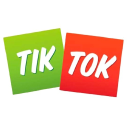Failing Thrice, Then Building A $40K/Month Shopify App By The Age Of 25
Hello! Who are you and what business did you start?
Hey! I’m Mat De Sousa. I’m 25, live in Paris, and founded WideBundle. WideBundle is a Shopify App that I created in May 2020. I was in my last year of engineering school and had to do an internship, but I asked if I could build a company instead of doing it. And they agreed!
WideBundle helps Shopify merchants create bundles and offers on their Shopify store to increase their average order value. We make people earn more!
If you don’t know what Shopify is, it’s a platform that makes creating an online store easy. Anyone can start selling without technical knowledge, and what’s fantastic is that Shopify allows developers to create modules that merchants can install to get more features. We can then put our app into the Shopify App Store and reach millions of merchants!
WideBundle wasn’t my first Shopify App. We have to go back to 2017 when I discovered Shopify. I learned how to make a Shopify App and made three apps that failed.
We didn’t have a lot of documentation about building an app when I started, and there was nothing about...

Download the report and join our email newsletter packed with business ideas and money-making opportunities, backed by real-life case studies.

Download the report and join our email newsletter packed with business ideas and money-making opportunities, backed by real-life case studies.

Download the report and join our email newsletter packed with business ideas and money-making opportunities, backed by real-life case studies.

Download the report and join our email newsletter packed with business ideas and money-making opportunities, backed by real-life case studies.

Download the report and join our email newsletter packed with business ideas and money-making opportunities, backed by real-life case studies.

Download the report and join our email newsletter packed with business ideas and money-making opportunities, backed by real-life case studies.

Download the report and join our email newsletter packed with business ideas and money-making opportunities, backed by real-life case studies.

Download the report and join our email newsletter packed with business ideas and money-making opportunities, backed by real-life case studies.

























